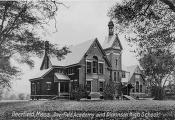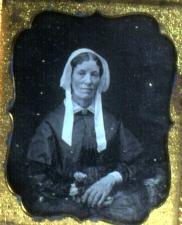|

Deerfield Academy/ Dickinson High School

Will of Esther (Harding) Dickinson

Esther (Harding) Dickinson (1790-1875)
|
Summary and Objective
Students will learn that there are many ways to have a positive and lasting effect their communities. Using a primary source from the Collection, students will learn how a common person, like Esther Harding Dickinson, can make a lasting impact. After becoming aware of the present needs in their own communities, students will use the historical example of Mrs. Dickinson to project a positive impact into their futures.
Teaching Plan
Step 1.
In a computer lab, students will read about the life of Esther Harding Dickinson in the Collection, taking note of the years of her life, her residence, her role in life, and that she left money in her will for a school and library in her town.
Step 2.
Students will write a paragraph on the impact of her bequest. How many students have benefited from her thoughtfulness and what impact on their communities might they have had after they graduated? In this way, one contribution can multiply exponentially.
Step 3.
Students will brainstorm a list of the public places, public institutions, charities and needs in their communities.
Step 4.
As a homework assignment (in order to give them some time to think), students will be asked to write a will in which they have $100,000 to leave to for a good purpose. They can present their bequest on a sheet of paper to be tacked onto the blackboard or onto a "Poster of Positivity"
The teacher can explain that we cannot all be a president, a famous general, a star athlete, a world renown artist, or a Nobel prize winner, but that making a contribution in one's will is just one way to make a difference.
Step 5.
As a follow up activity, students can research and compare the philanthropy of Mrs. Dickinson, Andrew Carnegie and Bill Gates, noting the short term effect and the multiplier effect over time.
|




